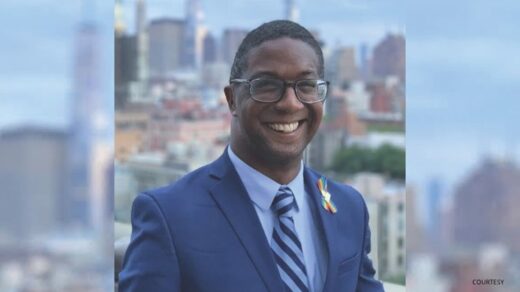Janelle Monáe, Kiersey Clemons on Antebellum’s All-Too-Real Monsters
The horror film Antebellum was made to be experienced as a community in a theater. But after its release date was moved a few times due to the lockdown, the Janelle Monáe starrer that draws a line from America’s racist beginnings to the present, dropped on streaming September 18 amid a national conversation about police brutality against Black people and systemic racism.
A film with a mysterious timeline, it has part of the story occurring in the antebellum South and a middle section that centers on Monáe’s Veronica, a Black empowerment author going about her day without realizing she’s being watched by a white woman, Jena Malone’s Elizabeth, who arrives with a terrifying racist agenda.
Meanwhile, Kiersey Clemons plays a woman who arrives at the antebellum plantation horrified and bewildered, who pushes for Monáe’s and Tongayi Chirisa’s characters to take action against their oppressors.
The film is written and directed by Gerard Bush and Christopher Renz, a real-life couple who meticulously searched for lenses used in Gone With the Wind to also call out Hollywood’s racist history.
In a series of interviews with The Advocate, Monáe, Clemons, Chirisa, Bush, Renz, Malone, and Gabourey Sidibe and Lily Cowles (who play Veronica’s best friends) discussed the film’s themes as well as the power of having two Black queer women (Monáe and Clemons) in pivotal roles.
Janelle Monáe
“I read the script in the bathtub. I sat there and read the entire script. My fingers were wrinkled because I thought I knew what the movie was doing and where it was going to go,” Monáe says of her initial reaction. “And, then, bam. Here comes this twist. Here comes this turn.”
“The origin of this story came from a nightmare that one of the directors [Bush] had and he put pen to paper,” she says. “I understand what that’s like to have the ancestors speak to you. I felt like I had a responsibility, not only to the ancestors but to all of the Black women who carry the burden of dismantling white supremacy and systemic racism on their backs every single day.”
Regarding Bush and Renz’s stroke in highlighting Hollywood’s treatment of Black people on camera and behind the scenes, she says, “I think storytelling, representation, and humanizing on screen is important.”
“I think that showing our range and making sure that we’re pushing stories that show the spectrum of Blackness. Because we’re not monolithic, right?” Monáe continues.
“We have to do our job. And those in a position of power in Hollywood have to do better about hiring more Black people, making sure they’re in the room when it’s time to green-light, making sure that you have a diverse roster of Black voices, especially when they’re telling Black stories. The heads of studios need to look at their boardrooms. They need to look at their hiring policy.
“This film connects the dots in a way that I haven’t seen on screen. It connects the dots between the past, the present, and what can be the future. And when we talk about the police, and we talk about defunding the police, and we talk about abolishing the police, the reason why we’re screaming is because the police started under racist policy.”
“When you look at the Civil War, the first institutions of policing were the slave patrols that they had to stop runaway slaves to chase them down, hunt them down, whip them, and kill them,” Monáe says. “It was never was policing to protect the people. It was always to terrorize Black people.”
Kiersey Clemons and Tongayi Chirisa
“I got a few scripts that were kind of within this Black horror genre. I think I was overwhelmed with that taste for a second,” Clemons says, but by the time she finished the script she knew she wanted to do it.
“I have so much respect for the artistry and for what Chris and Gerard [Renz and Bush] have done,” she says.
In terms of how Antebellum tackles present-day racism, Chirisa says, “It’s a conversation that we’ve been having for a very long time. I think now with George Floyd and the protests that took place, you can’t hide and run away from what we’ve been trying to tell you for so long. You can blatantly see 8 minutes and 46 seconds. Any rational person, Black or white, can be like ‘OK, that was a little excessive.’ Why is it so hard [for you] to see that?”
Gerard Bush and Christopher Renz
Renz touches on Antebellum and the horror film as a tool to tell their story that began as a dream his partner Bush had about his ancestors.
“It’s very much for this moment. I think that it being housed within this genre of horror is helpful to get it beyond preaching to the choir and out to the folk who need to get this message the most,” Renz says.
The film has a deeply queer pedigree with Bush and Renz as the writers and directors and with Monáe and Clemons in major roles, and Bush says that was “intentional.”
“We refuse to call ourselves by the name assigned to us. We might be marginalized by some people, but we feel major,” Bush says.
“We think that the people that we have that are a part of this film in Janelle and Kiersey and ourselves, that we recognize that visibility is crucial.
“We want as many young people at home that look to us and realize, in recognition, that there is a huge opportunity for a happily-ever-after in marriage, in art, in work, in life. We think that to be, I gotta say, I think one of the greatest gifts of my life is to Black and to be gay. I think it’s an extraordinary combination of blessings.
“What we want to do is to continue to amplify what that means in this world that so desperately needs a diverse range of powerful voices to be heard. I hope that when they see these extraordinary performances by Janelle and Kiersey and the representation of Christopher and I as the writers/directors that created the movie that is the vehicle, that all of that was intentional. We were deliberate in those choices because we want the visibility.”
Jena Malone
“I think that we hide or have previously hid behind this idea of white fragility in the sense of, “If I don’t say anything, I’m not going to, sort of, have harm come to me,'” Malone says of seizing this time to examine privilege.
“We are literally living in one of the greatest social justice movements of our time. And by really examining those invisible threats, the ones where we really are in power — these women that are puppeteering a lot of things, that are using a lot of manipulation and microaggressions to continually put emotional violence onto Black women, Black bodies, Black experiences,” she says. “It just feels like more than ever it is the time to be speaking up and examining this and not allowing those types of women to be portrayed as white saviors anymore.”
Gabourey Sidibe and Lily Cowles
Cowles, who plays Sarah, a close friend to Monáe’s Veronica, touches on allyship and the fact that there’s a long way to go.
“I think the character of Sarah, for instance, is something that a lot of white women can probably relate to — perceiving herself to be an ally, who is aware on some level of some microaggressions and unaware on another level,” she says. “I hope that many women who consider themselves to be allies can relate to Sarah and take that as a jumping in point.”
For Sidibe, the movie is dropping at a crucial time, but the conversations it might spark are the discusions of her lifetime.
“The current moment is obviously at the forefront of a lot of people’s minds, but the current moment has been the entirety of my life. My mom is from the south and it’s been the entirety of her life and my father’s from Africa and also the entirety of his life,” Sidibe says.
“This feeling of fear and of rage and injustice and in seekind for justice is not new to some part of us as Americans and it’s not new to me. But what’s great about this movie and the timeliness of this film is now we are at a point where we will not go back,” she says. “We will not be under your thumb. We’re no longer asking for justice. We are demanding it. If there’s not justice for us, there’s no justice for all.”
Original Article on The Advocate
Author: Tracy E. Gilchrist





